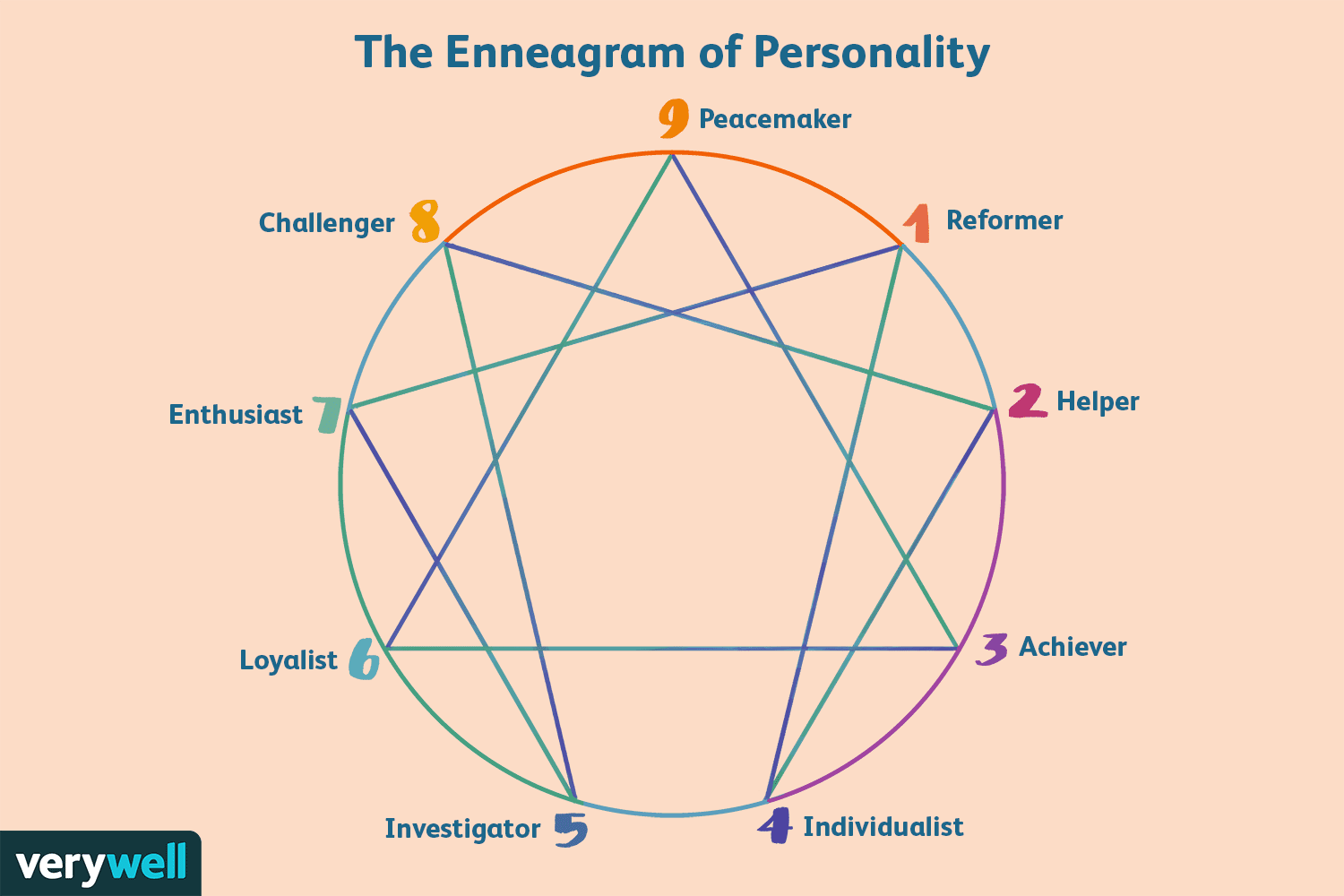What is the Enneagram?
The Enneagram of Personality is backed by research as a model of personalities broken down into nine types. The Enneagram links each of the nine personality types to one another within a circular diagram. Originally created in 1915 by philosopher George Gurdjieff, it wasn’t until the late 1960s when the nine specific personality types were placed within the Enneagram diagram. Since its creation and development, the overall goal of the Enneagram is to use it as a human development system and incorporate it into modern psychology studies.

What are the 9 Enneagram types?
The nine Enneagram types include:
- The Reformer
- The Helper
- The Achiever
- The Individualist
- The Investigator
- The Loyalist
- The Enthusiast
- The Challenger
- The Peacemaker
Enneagram theory states that people are born with dominant personality types and then those types can be molded by the environment and experiences in someone’s life. If you take the Enneagram test and receive your dominant type, but resonate with other types as well, it is natural. However, Enneagram theory also suggests that your dominant type is the most important to your personality.
For instance, you may test as a 7, or the Enthusiast, but also have a high score in a 6, the Loyalist. This is called a “wing.” Your wing is an adjacent number on the diagram that influences your dominant type. Although you have majority characteristics of an Enthusiast, your traits that tie into the Loyalist don’t change your personality.

Although the Enneagram model can be confusing to understand, here are three things to make your understanding a little easier:
- The numbers on the Enneagram model are neutral
These numbers may seem like they are ranked from highest to lowest with one being the most strong and nine being the weakest, or vice versa. But, that’s not the case. Numbers were chosen to represent the model because they are neutral and do not specify feminine or masculine types, as all types are gender-neutral and universal. The number you are simply specifies which type you are, and nothing else.
2. There are 3 “centers” within the Enneagram model
The three Enneagram centers are Instinctive, Feeling and Thinking. Each center hosts three personality types. For instance, the Thinking Center hosts 5, 6 and 7; Feeling hosts 2, 3 and 4 and Instinctive hosts 8, 9 and 1. The Enneagram centers are also tied with a main emotion when dealing with hardship. Anger and rage are associated with the Instinctive Center while shame is associated with Feeling and fear with the Thinking Center.
3. Just like the number of Enneagram types, there are 9 Levels of Development
Humans are always changing due to internal and external experiences, so it is natural to not always be in one stage of your personality. For this reason, the nine Levels of Development were created to allow people to reflect on where they are in their lives correlating with their Enneagram type. According to the Enneagram Institute, “One of the most profound ways of understanding the Levels is as a measure of our capacity to be present.” Meaning, the further down we go on the Level scale, the more ego-centric we are (and not in a good way!) The goal is to move up the ladder of Levels and eventually reach Level1 “The Level of Liberation.”
How Counseling Ties in with Enneagrams:
Although Enneagrams may not be discussed in your counseling appointments, On Demand Counseling is dedicated to helping you find peace and clarity within yourself. Our mental health professionals are trained in many aspects of mental health including trauma and substance use.
